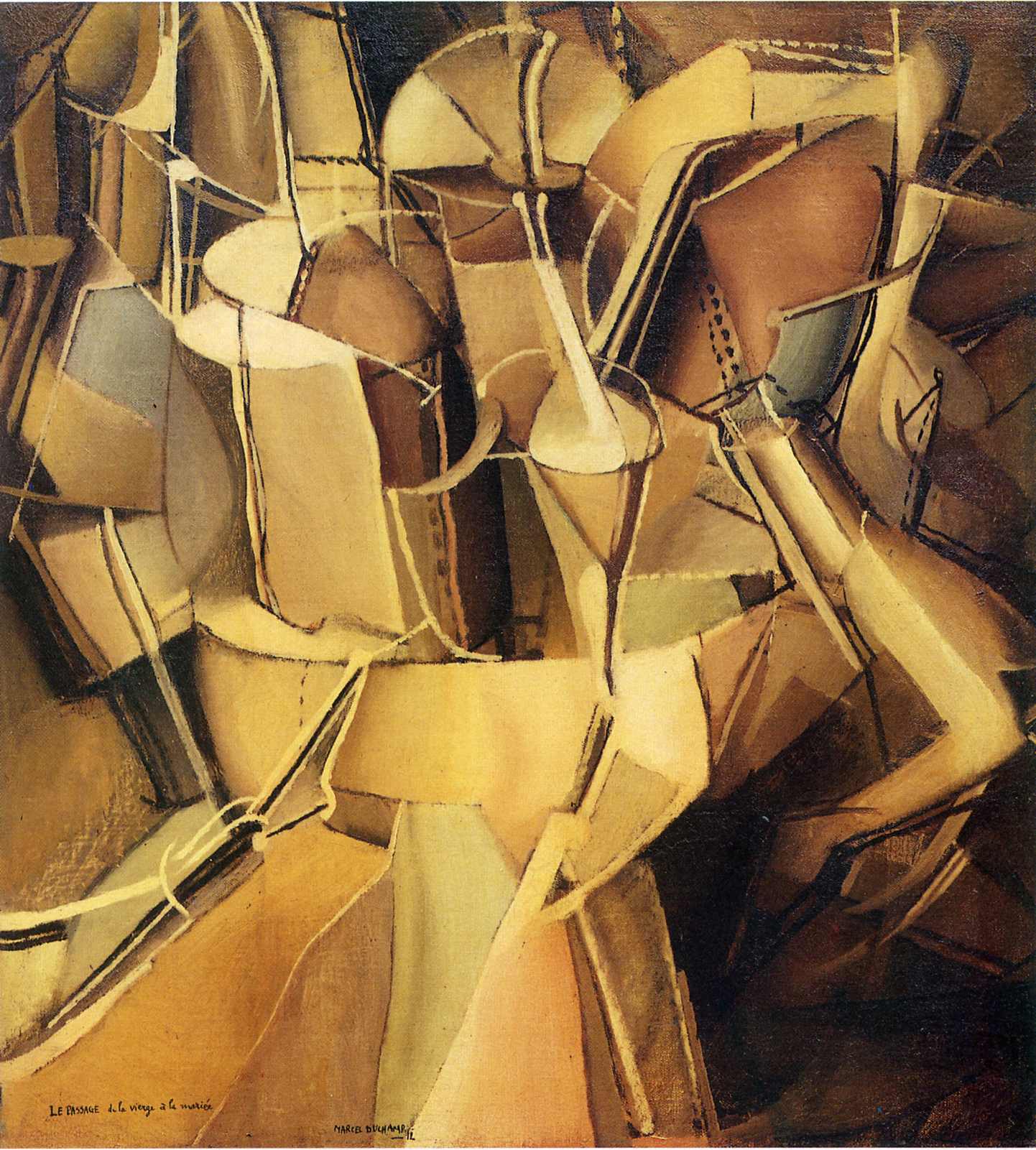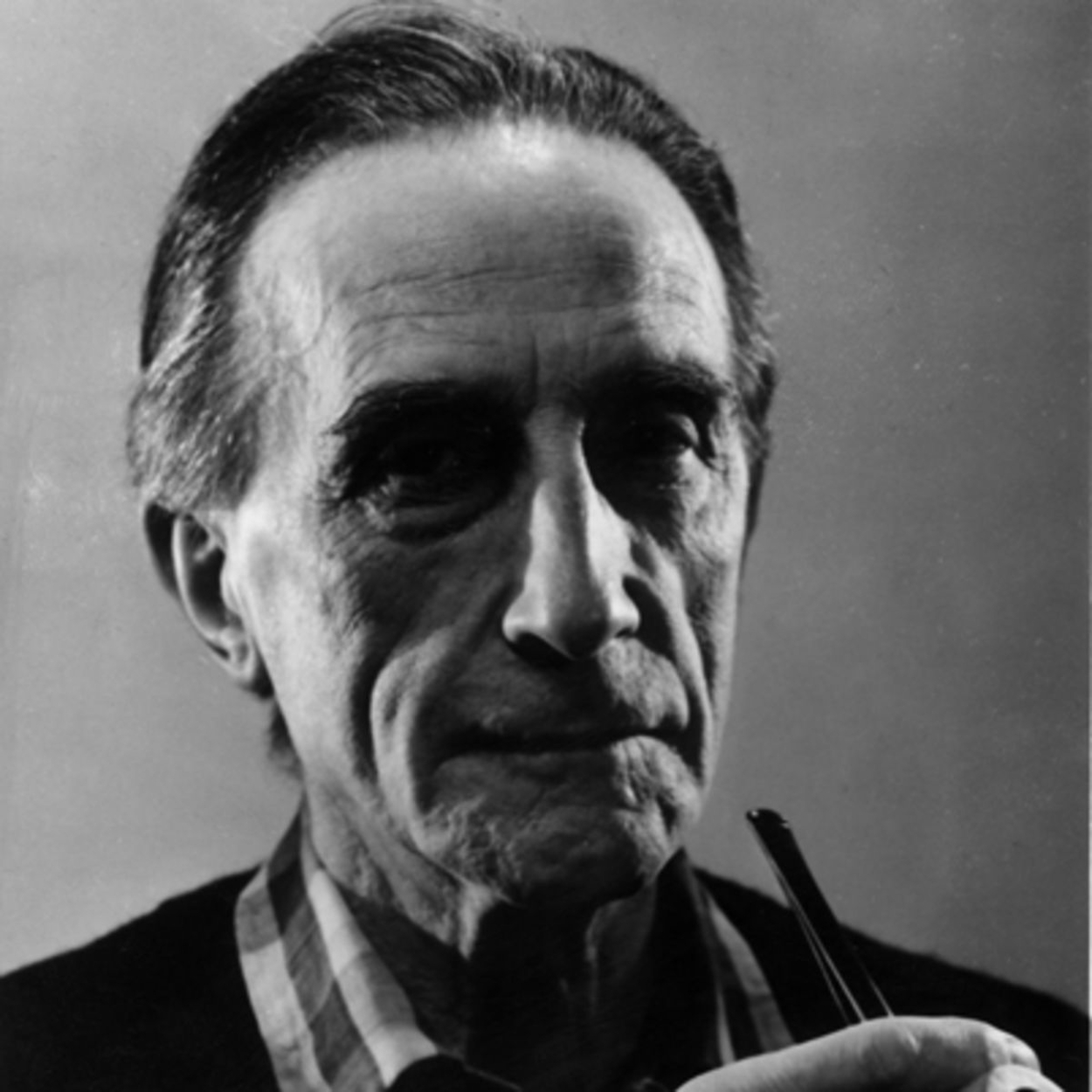This painting oscillates between the mechanical and the bodily, one can understand it as Duchamp's deadpan response to the emergence of abstract art, also dubbed "pure painting" by the artist and critic Guillaume Apollinaire. Duchamp subsequently explained that he wanted to turn this idea of purity into eroticism, which he said "would be a new artistic 'ism.'" He worked on this piece during a stay in Munich in the summer of 1912, where he encountered the art of Kandinsky and read the Russian artist’s book On the Spiritual in Art, a treatise on abstraction. Countering Kandinsky’s vision of abstract art as a means for elevating the soul, Duchamp suggested that the sensual appeal of a painting such as The Passage from Virgin to Bride serves as a metaphor for human sexuality.
"Eroticism is close to life," Duchamp said, "closer than philosophy or anything like that, it’s an animal thing that has many facets and is pleasing to use, as you would use a tube of paint."


 Marcel Duchamp
Marcel Duchamp